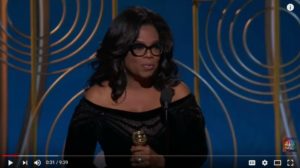President Trumps 2018 State of the Union speech was one of the worst-delivered speeches I’ve ever seen. Note I said, “delivered,” not “written.” I have yet to read the transcript from beginning to end.
The next day, I was on the radio to discuss it, made my case, and the host pushed back, telling me a CBS poll had said 75% of respondents approved of the speech. I wasn’t moved. I know what I know.
Let me explain why the speech was a failure from the delivery standpoint. The core reason is that so-called speaking from the heart requires the speaker to be in touch with one. That’s the intangible reason. But there are tangible reasons, as well, that every speaker should learn. Here they are…
- He clearly didn’t practice: This is a badge of honor for him, which is ridiculous and a disservice to his audiences. It is something the best speakers get right, which is why there are so few of them.
- He didn’t sound like he’d read it through from beginning to end. Some words seemed to surprise him, like Scourge, which he pronounced Skorge. (See #1.)
- The body language was all wrong, particularly facial expression. He seemed angry and scowled throughout. Also, his applauding of his own words was particularly off-putting and his incitement of the GOP members to chant, “USA, USA” was completely inappropriate. This was not a campaign rally.
- His rate and pacing were plodding. These speeches are always on the long side and this one was much too long. It didn’t have to be. A moderate pace is about 140 words per minute. Including the frequent prolonged applause interruptions (common), this one was 65 wpm. If we are generous and subtract the applause, that brings us to about 100 wpm. This is much too slow and another result of #1.
- His voice is very low quality. It’s thin, breathy, and although very familiar, it’s unpleasant to listen to at length. It’s also somewhat monotone in these types of formal, stick-to-the-teleprompter-delivered speeches. A good speaker doesn’t need a voice like James Earl Jones (see Bill Clinton or George W. Bush), but there are ways to strengthen the speaking voice and the POTUS should do so to meet the requirements of his job.
- He has a habit of biting off choice words, lingering on it, spreading his mouth, jutting out his chin, and baring his teeth, but not in a smile. This seems to happen when he feels he hasn’t received credit for something he thinks he deserves or wants to cast blame. It’s utterly graceless, just plain weird, and out of place in such a decorous setting.
- The structure of the speech lacked enough rhetorical flourishes. Not that the president would’ve known what do do with them if they were there. There were a couple, but he was unable to land them (see #1) which did not allow this speech to rise to the soaring, uplifting speaking we as a nation crave and deserve.
- Audible inhales were prevalent. What is with this? It’s an unfortunate and distracting habit he should work on.
As I alluded, the written speech may be much better than his delivery showed. (I still haven’t had a minute to read it all the way through.) Yet, for all the claims from him and the White House that this speech would be unifying and “from the heart,” it seemed clear to me the only unity he was interested in was with his existing fans and as for his heart, I don’t think he actually knows where it is.

